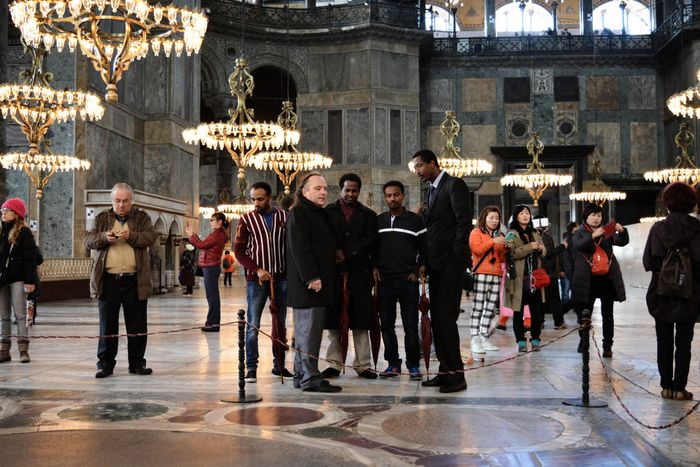St Cyril of Jerusalem, twelfth Instruction.
If you seek the cause of Christ’s presence, go back to the first chapter of Scripture. God made the world in six days, but the world was made for man. The most brilliant sun glowing with light was made for man. And all living things were created for our service, trees and flowers for our enjoyment. All created things were beautiful, yet only man was the image of God. The sun arose by command alone: man was moulded by the Divine Hand. “Let us make man to our image and likeness.” The wooden image of an earthly king is honoured, how much more the rational image of God?
St John Chrysostom, on the Machabees.
The royal effigies are shown forth not only on gold and silver, and the most costly materials, but the royal form itself, even on copper. The difference of matter does not affect the dignity of the character impressed, nor does a viler material diminish the honour of what is great. The royal figure is always a consecration; not lessened by matter, it exalts matter.
The same, against Julian the Apostate.–1st Book.
What does this new Nabuchodonosor want? He has not shown himself kinder to us than Nabuchodonosor of old, whose furnace still pierces us through, although we have escaped from its flames. Do not the shrines of saints in churches, inviting the worship of the faithful, show forth the destruction of the body?
The same, on the Piscina.
Just as when the royal effigy and image is sent or carried into the city, rulers and people go out to meet it with respect and reverence, not honouring the wooden receptacle, or the waxen representation, but the person of the king; so is it with created things.
Severianus of the Gabali, on the Cross.
Fourth Homily.-“Moses struck the rock twice.” Why twice? If he was obeying God’s commands, what need was there of striking a second time? If without, not two, or ten, or a hundred strikings would have unlocked nature: if it was simply God’s work without the mystery of the Cross, one striking, or nod, or word would have sufficed.
But it is meant to be an image of the Cross. Moses, the Scripture says, struck once and then again, in the sign of the Cross, not for actual necessity, so that inanimate nature might reverence the symbol. If in the king’s absence his image supplies his place, rulers worship, and festivals are held, and princes go out to meet it, and people prostrate themselves, not looking at the material, but at the figure of the king shown forth in representation not seen in nature, how much more shall the image of the Eternal King break open the heavens and the whole universe, not the rock alone.
Read More about Apologia of St John Damascene Against those who Decry Holy Images Part 75








